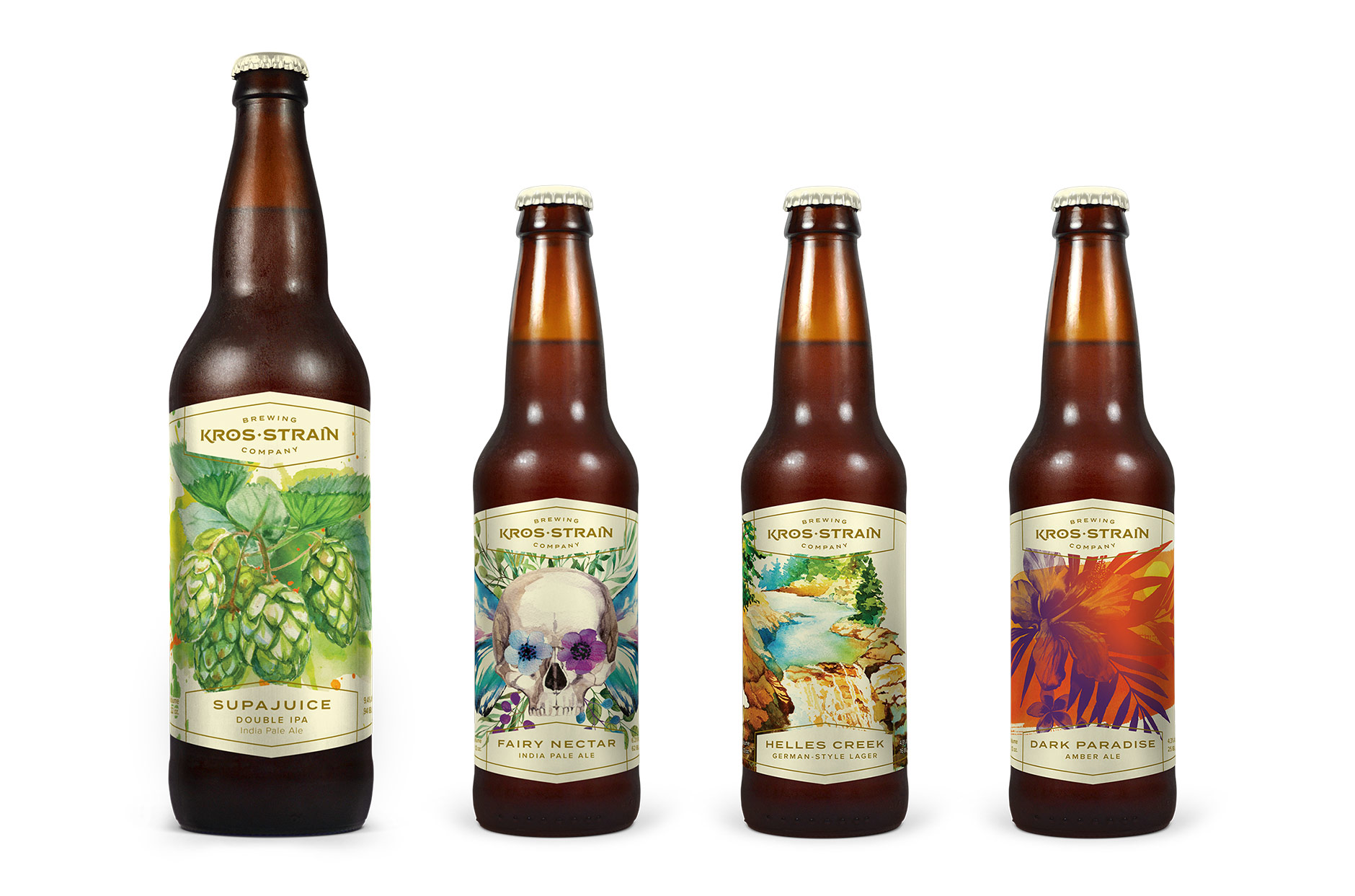Positioning is crucial to setting your brewery apart and telling your story.
When you’re opening a brewery, you need to understand and be able to very succinctly articulate how you’re different from every other brewery in your town—or even your region, depending on your concept and longterm goals. While you can get really technical with this (with market and trend analyses, etc.), we’re approaching it from a branding perspective. We like to nail down three main points to define your positioning:
-
1
WHAT DO YOU DO?
What type of beer do you brew? What’s your concept?
-
2
Who do you do it for?
Who do you want drinking your beer? Who makes up your tribe? Why do they need your brewery to exist?
-
3
how are you different from your competition?
Not necessarily better, but what makes you unique?
One of our favorite tools to kick the positioning process off is a matrix—a simple graph composed of an X and Y axis that each represent a different attribute of a brewery. These attributes might be price (low–to–high), visual style (minimal–to-heavily illustrated, etc.), and so on. This is an iterative, ‘back-of-the-napkin’ method for thinking about your brewery culture, your fans, your competition, and how they all come together to reveal opportunities for brand strategy and marketing.
For example, let’s use a matrix to help you determine where the breweries in your town fall to get a quick, eagle’s-eye view of what is, and isn’t happening in your market. These are a few questions to help you evaluate different aspects of your market to see how your brewery fits into it. These are all made up, so just follow along.
- Are they a brewpub or bigger production brewery? What’s their overall concept?
- Do they distribute or are they carry out only?
- Are they new or established?
- Are they involved in the local community?
- What beer styles are they known for?
- Are they well-branded? Do you know what they stand for?
- Do they create an inclusive, approachable place or are they more of a hardcore beer geek hangout?
- How do their prices compare to everyone else? (on-premise and off?)
Choose a few of these and plot them on a matrix where you think they fall:

Using this group of breweries as an example, we see a lot of inclusive brewpubs featuring well-made, drinkable, non-offensive beers—nothing crazy, just the standard lineup. And while there are a few breweries in the region packaging more specialty beers (barrel-aged stouts, imperial IPAs, and sours, for example), there aren’t any brewpubs to visit to regularly try these beers. Admittedly, this is an oversimplified look at the market, but this matrix reveals a potential opportunity if the local beer scene is mature enough to support this type of concept.
We’ve found matrices, like this one to be great tools to use at different stages throughout the startup process. You can use them at the very beginning when you’ve got a 30K foot bare-bones idea, and later in the process when might have a few partners, more capital and/or a potential location and need to test your ideas and assumptions about your position in the market. Matrices can also help you establish the visual tone, look and feel of your brewery.

Kros Strain Brewing (La Vista, NE) came to market with a colorful packaging system to stand out from the region’s Old Guard breweries.


Prodigy Brewing (Beijing, China) worked to stand out from a growing Chinese beer scene by using an Americanized look and feel across their branding and packaging.
OTHER THOUGHTS
-
1
HOW YOUR LOCAL COMMUNITY SHOULD SHAPE YOUR POSITIONING
Working through your branding and positioning is an invigorating, challenging, and aspirational process. And while a lot of the work involves looking in toward yourself and your partners, you need to remember to consider one of the most important aspects of any business—who are your customers and what problems do they have?
This sounds strange when you’re talking about brewing beer: People want beer, I make beer. Simple, right? You need to dig deeper than that, though. Think about your potential customers and consider how your concept can best fit into their lives. What does your community lack? Is there a local brewpub where people can gather? How about a great pizza and beer joint? Does your region have a brewery to call its own? Maybe there’s no live music venue that supports smaller acts?
What purpose do you serve? How are you different from your competition? What role do you play in peoples’ lives? Getting this nailed down will give you a solid foundation to build your brand and brew great beer for the right people.
-
2
IT TAKES A VILLAGE
Keep these matrices loose and have other people make them as well. It’s fun to see how three or four people’s opinions can differ when you look at them side by side. Bonus points if you can get some completely unbiased people to participate. We’ve actually gone to local beer bars to find people to fill these out to help a client. (Tough gig, we know).
Comparing results also hammers home how subjective this entire process is, especially when you’re considering how different people interpret brand messaging.
-
3
ALL THAT GLITTERS ISN’T GOLD
It sounds obvious, but there could be a very good reason no one is brewing or packaging a particular beer style in your market. Using the aforementioned example, opening an all-sour brewery could be a gamble in an area with very few other breweries if the market is just be getting used to craft beer and may not ready for something more “niche.”
-
4
NOT JUST FOR BREWERIES IN PLANNING
Say you’ve been open for a few years and are considering a rebrand. Matrices are still a valuable tool to use because at their core, they identify opportunities. And the beautiful thing here is you can tailor them to define whatever you want, from beer styles, to tasting room experience, to package design, and beyond.

